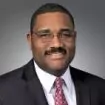Key Points
- The District of Columbia Court of Appeals has adopted Federal Rule of Evidence 702 as the legal standard for determining the admissibility of expert testimony in the District of Columbia in all cases, criminal and civil, that have not yet begun trial.
- In so doing, the court abandoned a 90-year-old precedent set by Frye v. United States decided by the United States Court of Appeals for the District of Columbia Circuit in 1923.
- This is the first time the court has
accepted a party’s request for an en banc
interlocutory appeal.
Yesterday, the District of Columbia Court of Appeals issued its opinion in Motorola Inc. v. Murray (No. 14-CV-1350), abandoning the Dyas/Frye test applied by the District of Columbia Superior Court in determining the admissibility of expert testimony and adopting Federal Rule of Evidence 702 as the test for admissibility in all cases, both civil and criminal, that have not yet begun trial. In so doing, the District of Columbia joins all federal courts and 41 states that have replaced or supplemented Frye with some form of Rule 702.
Dyas v. United States, 376 A.2d 827 (DC 1977), decided by a three-judge panel of the District Of Columbia Court of Appeals in 1977, and Frye v. United States, 293 F. 1013 (D.C. Cir. 1923), decided by the United States Court of Appeals for the District of Columbia Circuit in 1923 (at a time when such opinions were binding on the District’s courts), had been widely criticized as “antiquated and out-of-step with modern science.” As Judge Fisher, writing for unanimous majority of the en banc court, further noted, “[Dyas/Frye] avoids, even forbids, looking at the crucial question of whether the testimony offered in a particular case is reliable.” Opinion at 13.
Rule 702
The Court adopted Rule 702 in its current form, noting that it had been amended stylistically in 2011 as well as in 2000 to reflect the Supreme Court’s guidance from the so-called Daubert trilogy: Daubert v. Merrell Dow Pharmaceuticals, Inc., 509 U.S. 579 (1993); General Electric Co. v. Joiner, 522 U.S. 136 (1997); and Kumho Tire Co. v. Carmichael, 526 U.S. 137 (1999). It provides:
A witness who is qualified as an expert by knowledge, skill, experience, training, or education may testify in the form of an opinion or otherwise if:
- the expert’s scientific, technical, or other specialized knowledge will help the trier of fact to understand the evidence or to determine a fact in issue
- the testimony is based on sufficient facts or data
- the testimony is the product of reliable principles and methods
- the expert has reliably applied the principles and methods to the facts of the case.
The court acknowledged that the transition to Rule 702 would not be easy and that there would be a “considerable cost” to judges and lawyers who “will have to adjust to new rules.” Opinion at 18. But ultimately, the Court “conclude[d] that Rule 702, with its expanded focus on whether reliable principles and methods have been reliably applied, states a rule that is preferable to the Dyas/Frye test.” Opinion at 15. Judge Fisher further wrote that “[t]he goal is to deny admission to expert testimony that is not reliable, but to admit competing theories if they are derived from reliable principles that have been reliably applied.” Opinion at 16. Put simply, “[t]he trial court . . . will need to determine whether [an expert’s] opinion ‘is the product of reliable principles and methods[,] . . . reliably applied.’” Opinion at 17 (quoting Fed. R. Evid. 702(c), (d)).
A Unanimous Decision
In authoring the court’s opinion, Judge Fisher was unanimously joined by the en banc court (Judge McLeese had previously recused himself from considering the appeal). Additionally, Judge Easterly authored a concurring opinion in which she advocated for trial courts assessing the admissibility of forensic expert testimony to rely upon “landmark reports that examine the scientific underpinnings of certain forensic disciplines routinely admitted under Dyas/Frye.” Specifically, Judge Easterly referenced the National Research Council’s congressionally mandated 2009 report Strengthening Forensic Science in the United States: A Path Forward and the President’s Council of Advisors on Science and Technology’s 2016 report Forensic Science in the Criminal Courts: Ensuring Scientific Validity of Feature-Comparison Methods.
Background
The court’s opinion, the first time the court has granted a party’s request for an interlocutory en banc appeal, arises following numerous suits brought against cellphone manufacturers, service providers, and related trade associations alleging harm from long-term exposure to cell-phone radiation.” Opinion at 2. Following four weeks of evidentiary hearings on the admissibility of the expert testimony offered by the plaintiffs, the trial court concluded that “some, but not all of Plaintiffs’ proffered expert testimony on general causation is admissible under the Frye/Dyas evidentiary standard” and that “most, if not all, of Plaintiffs’ experts would probably be excluded under the Rule 702/Daubert standard . . . .” Opinion at 3. The court remanded the case to the trial court for further proceedings consistent with the opinion.
Akin Gump Strauss Hauer & Feld LLP represents one of the defendants in these actions.
The content of this article is intended to provide a general guide to the subject matter. Specialist advice should be sought about your specific circumstances.

